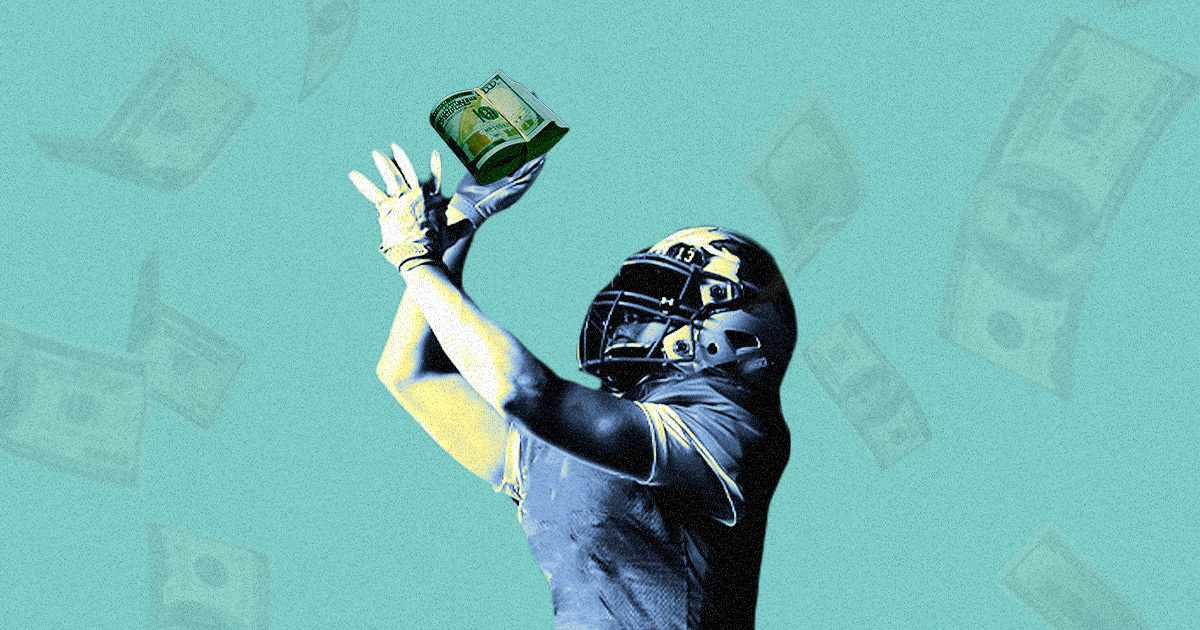BillSU
All American
- Joined
- Jun 18, 2018
- Messages
- 6,437
- Like
- 9,956
ARE WE GOING TO PLAY NICE IN THIS NEW WORLD OR KEEP OUR HEAD IN THE SAND?
COLLECTIVES:
When the NCAA’s Board of Directors adopted an interim rule opening the opportunity for NIL activity beginning July 1, 2021, student-athletes were finally able to receive financial compensation.
Sports attorney and NIL pioneer Darren Heitner recalls receiving a direct message from Eddie Rojas that morning. The former Florida baseball star described a business model that pooled together cash from boosters to provide opportunities for student-athletes.
The two tossed around names for the organization. A month later the Gator Collective was formed. Rojas is now the CEO of the leading Florida collective. That first organization set off a firestorm of donor-driven collectives across the college athletics landscape.
Often founded by prominent alumni and influential supporters, school-specific collectives pool funds from a wide swath of donors to help create NIL opportunities for student-athletes through an array of activities.
Collectives, which are independent of a university, can serve a variety of purposes. Most often, they pool funds from boosters and businesses, help facilitate NIL deals for athletes and also create their own ways for athletes to monetize their brands. The term “collective,” which generally means a cooperative enterprise, has no particular legal significance.
Industry sources expect every Power 5 school to be affiliated with at least one NIL-related collective by the end of the year. Those programs that fail to be affiliated with a robust collective risk being left in the dust in the ultra-competitive world of football and basketball recruiting.
In early June, in front of about 100 business people gathered at the Covelli Centre in Youngstown, Ohio, coach Ryan Day put a price tag on his Ohio State football team. Thirteen million dollars is needed from the school’s collective to fund his roster next year, he said. Michigan coach Jim Harbaugh says his program can double that, while new Gators coach Billy Napier gave his donors a target of $20 million.
Is SU even aware of Collectives and the driving force of them or not? And, would we even want to become involved in them beyond the gifts of Adam Wietsman?

 www.on3.com
www.on3.com
COLLECTIVES:
When the NCAA’s Board of Directors adopted an interim rule opening the opportunity for NIL activity beginning July 1, 2021, student-athletes were finally able to receive financial compensation.
Sports attorney and NIL pioneer Darren Heitner recalls receiving a direct message from Eddie Rojas that morning. The former Florida baseball star described a business model that pooled together cash from boosters to provide opportunities for student-athletes.
The two tossed around names for the organization. A month later the Gator Collective was formed. Rojas is now the CEO of the leading Florida collective. That first organization set off a firestorm of donor-driven collectives across the college athletics landscape.
What is a NIL collective?
As of July 1, 2022, there are more than 120 collectives either known or in the process of being formed, and that number is only growing. Of the 65 schools that make up the Power Five, 92% have at least one collective or are in the process of forming one. All 14 schools in the SEC have at least one organization.Often founded by prominent alumni and influential supporters, school-specific collectives pool funds from a wide swath of donors to help create NIL opportunities for student-athletes through an array of activities.
Collectives, which are independent of a university, can serve a variety of purposes. Most often, they pool funds from boosters and businesses, help facilitate NIL deals for athletes and also create their own ways for athletes to monetize their brands. The term “collective,” which generally means a cooperative enterprise, has no particular legal significance.
Industry sources expect every Power 5 school to be affiliated with at least one NIL-related collective by the end of the year. Those programs that fail to be affiliated with a robust collective risk being left in the dust in the ultra-competitive world of football and basketball recruiting.
In early June, in front of about 100 business people gathered at the Covelli Centre in Youngstown, Ohio, coach Ryan Day put a price tag on his Ohio State football team. Thirteen million dollars is needed from the school’s collective to fund his roster next year, he said. Michigan coach Jim Harbaugh says his program can double that, while new Gators coach Billy Napier gave his donors a target of $20 million.
Is SU even aware of Collectives and the driving force of them or not? And, would we even want to become involved in them beyond the gifts of Adam Wietsman?

What are NIL Collectives and how do they operate?
NIL collectives have quickly become a big story, with fans and alumni putting large amounts of money into them. But, what are they?






